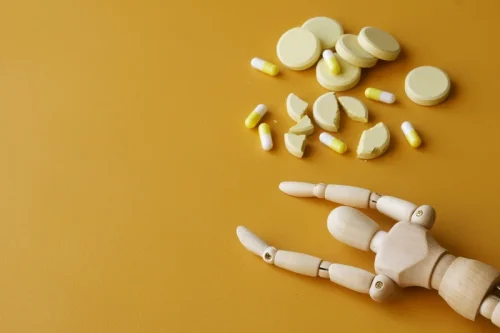Alcoholic Cardiomyopathy: Causes, Symptoms, and Diagnosis

In this respect, a higher prevalence of excessive alcohol consumption has been reported among individuals diagnosed with DCM than in the general population[8]. Epidemiological studies analysing the relationship between excessive alcohol consumption and the development of DCM have found the existence of a reciprocal link between both disorders. The existence of a direct causal link between excessive alcoholic cardiomyopathy is especially dangerous because alcohol consumption and the development of DCM is a controversial issue. While some consider that this toxin alone is able to cause such a disease[18,19], others contend that it is just a trigger or an agent favouring DCM[3,21,22]. Since those initial descriptions, reports on several isolated cases or in small series of patients with HF due to DCM and high alcohol intake have been published[15-17].
Laboratory findings
More than 30% of the myocyte ventricular fraction can be replaced by fibrotic tissue, thus decreasing the heart elasticity and contractile capacity [64] (Figure 2). Some cardiomyokines, such as FGF21, may regulate this process of alcohol-induced cardiac fibrosis [119]. Interestingly, many decades ago ACM was thought to arise due to nutritional deficiency, specifically thiamine (vitamin B12).
Alcoholic cardiomyopathy: Cytotoxicity of alcohol on heart muscle
Often, when a doctor suspects cardiomyopathy, they will order an echocardiogram. This test will assess the ejection fraction (EF), a measurement that expresses how much blood the LV pumps out with each contraction. Once doctors have found this, they will look for the cause of the weakened heart. Thiamine (200 mg once daily), multivitamins, vitamin B-12, folate, and mineral supplementation are beneficial for patients with AC because of the significant prevalence of concomitant nutritional or electrolyte deficiencies in these patients. Animal studies have suggested a benefit from vitamins B-1 and B-12, speculated to be due to protective effects against apoptosis and protein damage.

Clinical manifestations and diagnosis of alcohol-induced cardiomyopathy
- Analogous to the sarcoplasmic reticulum, the mitochondria were swollen or oedema was present, with crest alterations and intra-mitochondrial inclusions suggesting degenerative processes (Figure (Figure2).2).
- Furthermore, it is now evident that mitochondria function in networks and that when mitochondria become damaged their function can possibly restored by fusion with neighboring mitochondria (55).
- In his 1972 review article, Bridgen was the first to introduce the term alcoholic cardiomyopathy [27].
- However, the limit between reversible and non-reversible damage, in other words the “point of no-return”, is currently not known [12].
- Chronic ethanol misuse clearly depresses protein synthesis and degradation, involving both structural and non-structural heart proteins [104,128].
Electron microscopy reveals mitochondrial enlargement and disorganization, dilatation of the sarcoplasmic reticulum, fat and glycogen deposition, and dilatation of the intercalating discs. Regional wall motion abnormalities are not uncommon, but they are usually less https://ecosoberhouse.com/ prominent than those observed in persons with ischemic heart disease. Alcoholic cardiomyopathy can present with signs and symptoms of congestive heart failure. Symptoms include gradual onset worsening shortness of breath, orthopnea/paroxysmal nocturnal dyspnea.
Patient History
- These include damaging factors such as acetaldehyde or ROS, cardiac fibrosis, or apoptosis.
- On ECG, unspecific abnormalities like complete or incomplete left bundle branch block, atrioventricular conduction disturbances, alterations in the ST segment, and P wave changes can be found comparable to those in idiopathic DCM [113].
- This substance is a potent inhibitor of the enzyme acetaldehyde dehydrogenase, so it increases the presence of acetaldehyde, and it promotes its effects.48,50 The harmful effects of this substance have been found to be exerted at various levels, in both animal and human models.
- However, not drinking at all is still the best course of action whenever possible.
- Although there is beneficial potential in some patients, the coexistence of increased risk of cancer, neurological brain damage, and the high risk of ethanol addiction makes it necessary to discourage this low-dose consumption in the general population [19,41,45].
- In light of the available data, new studies will help to clarify the current prognosis of ACM compared to DCM and to determine prognostic factors in ACM that might differ from known prognostic factors in DCM.
Several growth factors and cardiomyokines exert an autocrine or paracrine effect that tries to compensate for this heart damage [119,133]. Antioxidant, anti-inflammatory, anti-apoptotic, and antifibrogenic mechanisms try to avoid myocyte necrosis and heart fibrosis [14,30,58]. The final result is that achieved from the equilibrium between the degree of damage and the capacity of heart repair mechanisms in each specific individual [31,56].

- Palpitations, dizziness, and syncope are common complaints and are frequently caused by arrhythmias (eg, atrial fibrillation, flutter) and premature contractions.
- Because the cardiac myocyte relative to other cell types, including the hepatocyte, contains the highest volume of mitochondria, the critical mass of mitochondria negatively impacted by ethanol before significant mitochondrial dysfunction occurs may be higher than other tissues.
- Although all of the studies reported an increase in left ventricular mass and volume, it cannot generally be stated that they provided the alcohol consumption dosage required to cause ACM.
- Others have demonstrated that long-term ethanol administration decreases myocardial protein expression and synthesis and accelerates protein degradation, suggesting that these alterations may represent a key pathophysiologic mechanism underlying the adverse effects of ethanol (62).
- Mitochondria play an essential role in cellular metabolism, and disruption of their function can have profound effects on the entire cell.
- At present ACM is considered a specific disease both by the European Society of Cardiology (ESC) and by the American Heart Association (AHA)[18,19].
Acute vs. chronic

